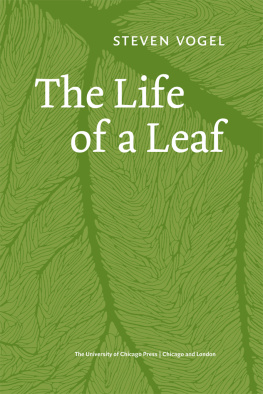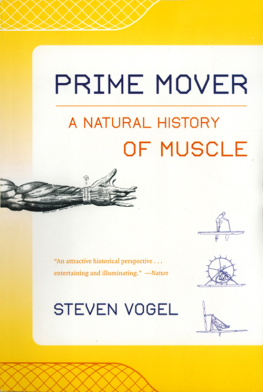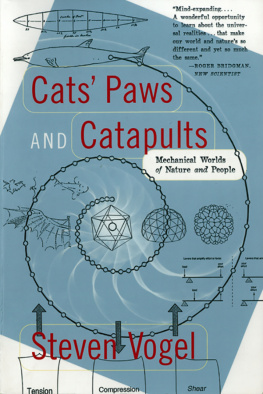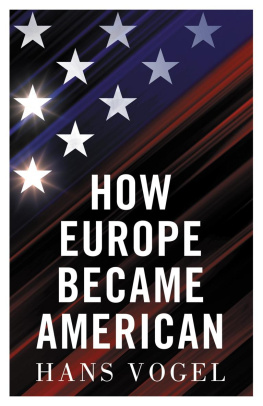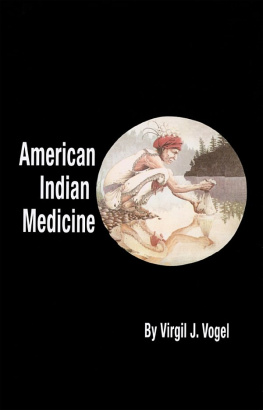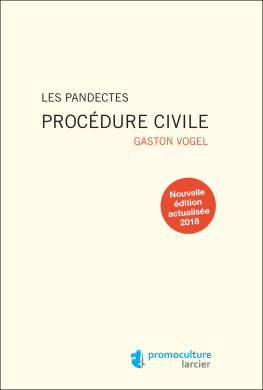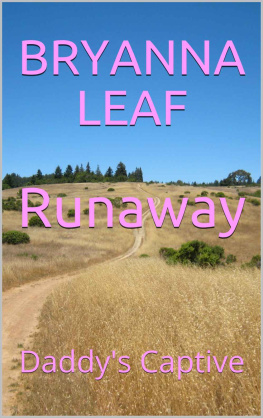Vogel - The Life of a Leaf
Here you can read online Vogel - The Life of a Leaf full text of the book (entire story) in english for free. Download pdf and epub, get meaning, cover and reviews about this ebook. City: Chicago, year: 2013, publisher: The University of Chicago Press, genre: Detective and thriller. Description of the work, (preface) as well as reviews are available. Best literature library LitArk.com created for fans of good reading and offers a wide selection of genres:
Romance novel
Science fiction
Adventure
Detective
Science
History
Home and family
Prose
Art
Politics
Computer
Non-fiction
Religion
Business
Children
Humor
Choose a favorite category and find really read worthwhile books. Enjoy immersion in the world of imagination, feel the emotions of the characters or learn something new for yourself, make an fascinating discovery.
- Book:The Life of a Leaf
- Author:
- Publisher:The University of Chicago Press
- Genre:
- Year:2013
- City:Chicago
- Rating:3 / 5
- Favourites:Add to favourites
- Your mark:
- 60
- 1
- 2
- 3
- 4
- 5
The Life of a Leaf: summary, description and annotation
We offer to read an annotation, description, summary or preface (depends on what the author of the book "The Life of a Leaf" wrote himself). If you haven't found the necessary information about the book — write in the comments, we will try to find it.
The Life of a Leaf — read online for free the complete book (whole text) full work
Below is the text of the book, divided by pages. System saving the place of the last page read, allows you to conveniently read the book "The Life of a Leaf" online for free, without having to search again every time where you left off. Put a bookmark, and you can go to the page where you finished reading at any time.
Font size:
Interval:
Bookmark:
STEVEN VOGEL
The Life of a Leaf
The University of Chicago Press | Chicago and London
STEVEN VOGEL is a James B. Duke Professor
Emeritus in Biology at Duke University.
The University of Chicago Press, Chicago 60637
The University of Chicago Press, Ltd., London
2012 by Steven Vogel
All rights reserved. Published 2012.
Printed in China
21 20 19 18 17 16 15 14 13 12 1 2 3 4 5
ISBN-13: 978-0-226-85939-2 (cloth)
ISBN-10: 0-226-85939-8 (cloth)
ISBN-13: 918-0-226-85942-2 (e-book)
Library of Congress Cataloging-in-Publication Data
Vogel, Steven, 1940
The life of a leaf / Steven Vogel.
p. cm.
Includes bibliographical references and index.
ISBN-13: 978-0-226-85939-2 (hardcover : alkaline paper)
ISBN-10: 0-226-85939-8 (hardcover : alkaline paper) 1. LeavesGrowth. 2. LeavesPhysiology. I. Title.
QK649.V644 2012
575.57dc23
2011037295
 This book has been printed on acid-free paper.
This book has been printed on acid-free paper.
To Flora Jane Vogel
Granddaughter with the
most apt of names,
from Grandpa Steve
Preface
Half a century of immersion in science has immeasurably enriched my world. I can only describe what it has added with analogiesas how great music sounds when heard in live concert as opposed to the output of a miniature transistor radio. Or as the shift to HD color from fuzzy black-and-white television. Science, I find, is fun to think about, to talk about, to write about, and, most of all, to do. Few activities can measure up to the satisfaction of not just answering some nagging question about the world but at the same time doing something that has never before been done by any human who has ever lived. One even feels empowered when looking at some bit of the immediate world and seeing something that would have been imperceptible without a sense of the scientific.
This book represents an attempt to draw you into that world of science. Not the one of interminable names, arcane procedures, and even more arcane mathematical expressions, but the one that offers satisfying explanations for innumerable aspects of the world around you. Unavoidably, the particular part of that world youll encounter happens to be my ownown not as ownership but as outlook. Im a biologist who asks about ways in which the appearances and activities of the organisms around us have been determined by their encountersindividually and evolutionarilywith the physical world. Thats a world that limits them, one that they cant much alter, but of which they can take all sorts of subtle advantages.
I tend to ask questions close to what might be called intuitive reality, keeping at arms length big bangs and deep space, atoms and molecules, ultimate causation, and so forth. Thus, relative to more sophisticated science, the price of admission remains low, perhaps close to what it must have been for most of science a few hundred years ago. Reallyif I look at the current issue of the oldest of our English-language journals, Philosophical Transactions of the Royal Society of London, I can understand only a few of the papers. If I look (online, at my university) at an issue from 250 years ago, I find every paper readable and struggle only to close the volume (or to deselect it). As a result, I find myself concerned with an unusually approachable collection of questions, explanations, and even fodder for investigation. Perhaps youll be led into that world; better yet, perhaps after all is said and done here, youll look differently at your immediate world, one that might be at least a little different from mine.
My intent can be put another way. An astronomer or a microscopist might introduce us to an otherwise unseen world. The account here, by contrast, aims to reveal an otherwise unnoticed world. Thus the photographs share a general ordinariness. Almost all are my own, accumulated over quite a few years and places, some opportunistically and some specifically for the present book. They havent resulted from the patience and artistry of the professionalIm not long on either virtue. I should admit to a fair bit of manipulation (Photoshopping seems to be the current descriptor). And I admit to a fondness for such fix-ups of contrast, background clutter, and so forthdigital, full-color versions of what I once did in the darkroom but reluctantly abandoned when I shifted to color slides.
Every few pages, youll encounter a suggestion that you might try something at home. If I were teaching a course, it would provide classroom demonstrations, taking shameless advantage of the unusual immediacy of my material. I think all the do-it-yourself suggestions here are safe enough from hazards other than the ire of those with whom one cohabits. If youre lucky, theyll instead be amused.
As to equations, most of us view these as mere formulas into which specific numbers can be put with the expectation that other specific numbers will come out. However, I suggest that the equations given in the footnotes be examined in a different way. Look at what the variables might be to see what matters. Then look at whether each particular one is in the numerator or the denominator to find whether the result will track it or go up when it goes down (and vice versa). And finally, look at the exponents to get an idea of the sensitivity of the result to shifts in the values of the variables.
After all is said, many of the issues here will be left unresolved. For some, this lack of closure can be unsettling, the kind of thing that prompts negative opinions about books and movies. For the working scientist, it generates more positive feelings, ranging from a goad for a specific project to a general sense that yes, science remains an open-ended venture, still fraught with uncertainty and on that account rich with opportunity.
Acknowledgments
I am anything but a proper botanist, even if my degrees say biology rather than zoology, and even if I was (briefly) a member of the Botanical Society of America. Im not even much of a gardenermy contribution to the family garden consists mainly of compost. So Ive drawn on friends, family, colleagues, and prepublication reviewers for information, suggestions, equipment, and extractions of feet from mouth. In particular, Im grateful for help and tolerance to Marilyn Ball, Anne Benninghoff, Norman Budnitz, Martin Canny, John Close, Mark Denny, David Ellsworth, Ken Glander, Louisa Howard, Peter Klopfer, Andrea Leigh, Dan Livingstone, Margaret McCully, Marty Michener, Adrienne Nicotra, Howard Reisner, Margareta Schmidt-Nielsen, Sanna Sevanto, Miles Silman, Bill Smith, Kathleen Smith, Donald Stone, Jane Vogel, Roger Vogel, Karen Wallace, Dick White, Robert Wilbur, and Claire Williams. Plus our local science book club, where I learn lots about how people read these booksas well as their likes and dislikes. A portion of the book was written while I enjoyed the excellent facilities and surroundings of the Whiteley Center of the Friday Harbor Laboratory at the University of Washington.
Starting the Story
Where to start? Maybe before reading further, you should glance out the nearest window. Unless youre stuck in a prison cell or high-rise apartment, you can probably see vegetation, green stuff you ordinarily ignore. Its just lifes wallpaper, something that provides a comfortably neutral foreground and softens the starkness and angularity of distant land. Those unassuming bits of vegetation, leaves in particular, provide our present protagonist. I intend to celebrate them, not as poet (Joyce Kilmer comes to mind) or novelist (think of Joseph Conrad), but as scientist. Ill try to convince you that looking at a leaf on a tree from the perspective of a scientist enhances rather than detracts from the aesthetic experience.
I mean to do more than that, however. If the story goes as I intend, you should begin to look with different eyes at your immediate surroundings, seeing not just leaves but yourself and everything around you as reflections of the physical situation here on solar planet number four. Too often we imagine science as a body of facts, growing breakthrough by breakthrough the way a pile of pancakes rises as each new one comes off the pan. At its core, though, science is not the facts but a way of thinking; not a body of knowledge but a way of knowing; a particular and peculiar way of looking at the world. And by world, we scientists mean more than moons and molecules. We include all the immediate and mundane, things like liquids, lionsand leaves.
Next pageFont size:
Interval:
Bookmark:
Similar books «The Life of a Leaf»
Look at similar books to The Life of a Leaf. We have selected literature similar in name and meaning in the hope of providing readers with more options to find new, interesting, not yet read works.
Discussion, reviews of the book The Life of a Leaf and just readers' own opinions. Leave your comments, write what you think about the work, its meaning or the main characters. Specify what exactly you liked and what you didn't like, and why you think so.

